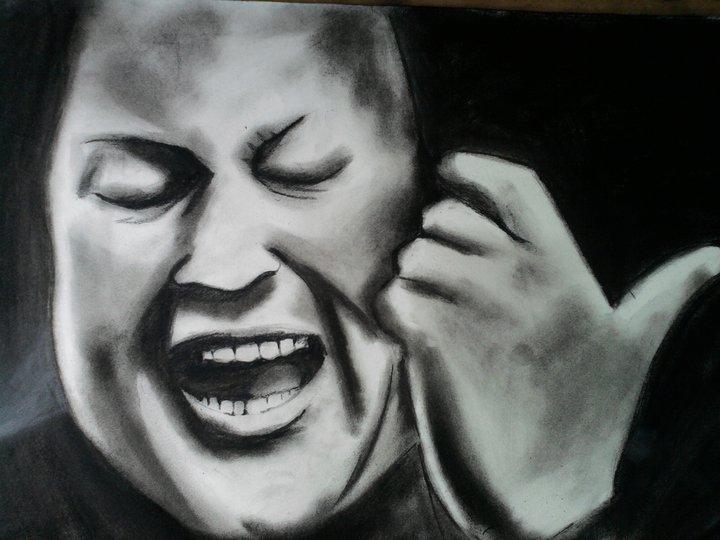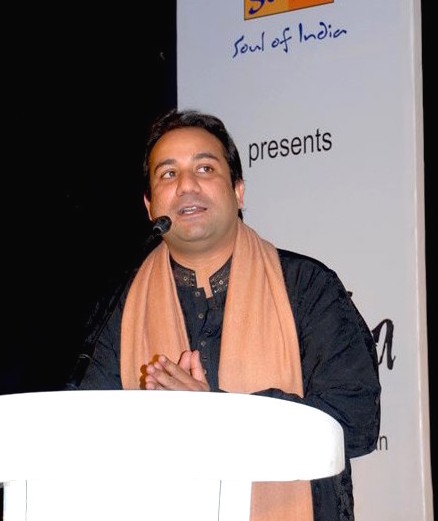|
Farrukh Fateh Ali Khan
Farrukh Fateh Ali Khan ( ur, ) (December 25, 1952 – September 7, 2003) was a Pakistani musician, who played the harmonium in Qawwali music. He was also a member of a well-known family of Qawwali musicians, the Qawwal Bacchon gharana (Delhi gharana), he was the younger brother of Nusrat Fateh Ali Khan, the son of Fateh Ali Khan (Qawwali singer), Fateh Ali Khan, the nephew of Mubarak Ali Khan, and the father of Rahat Fateh Ali Khan.Keeping Focus on Good Karma Los Angeles Times (newspaper), Published 31 August 1997, Retrieved 11 May 2019 Biography Nusrat Fateh Ali Khan was the leader of the family Qawwali party from 1971 until his death in 1997. Farrukh Fateh Ali Khan was one of only two people who remained members of the party throughout this period. Farrukh played the lead ...[...More Info...] [...Related Items...] OR: [Wikipedia] [Google] [Baidu] |
Harmonium
The pump organ is a type of free-reed organ that generates sound as air flows past a vibrating piece of thin metal in a frame. The piece of metal is called a reed. Specific types of pump organ include the reed organ, harmonium, and melodeon. The idea for the free reed was imported from China through Russia after 1750, and the first Western free-reed instrument was made in 1780 in Denmark. More portable than pipe organs, free-reed organs were widely used in smaller churches and in private homes in the 19th century, but their volume and tonal range were limited. They generally had one or sometimes two manuals, with pedal-boards being rare. The finer pump organs had a wider range of tones, and the cabinets of those intended for churches and affluent homes were often excellent pieces of furniture. Several million free-reed organs and melodeons were made in the US and Canada between the 1850s and the 1920s, some of which were exported. The Cable Company, Estey Organ, and Mason & ... [...More Info...] [...Related Items...] OR: [Wikipedia] [Google] [Baidu] |
Pakistan Television
Pakistan Television Corporation ( ur, ; reporting name: PTV) is the Pakistani state-owned broadcaster. Pakistan entered the television broadcasting age in 1964, with a pilot television station established at Lahore. Background Historical context The idea of establishing a media and television industry was conceived in late 1956 and created by the privately set up national education commission, with the support of President Ayub Khan in 1960. Retrieved 13 January 2016. In 1961, the private sector media mogul and industrialist Syed Wajid Ali launched a television industrial development project, bringing the role of Ubaidur Rahman, an electrical engineer in the Engineering Division of Radio Pakistan, as the project director of the first television station in Lahore. Ali reached a milestone in 1961 after establishing a private television broadcasting company with the cooperation of Nippon Electric Company (NEC) of Japan and Thomas Television International of the United Kingdom. ... [...More Info...] [...Related Items...] OR: [Wikipedia] [Google] [Baidu] |
Harmonium Players
The pump organ is a type of free-reed organ that generates sound as air flows past a vibrating piece of thin metal in a frame. The piece of metal is called a reed. Specific types of pump organ include the reed organ, harmonium, and melodeon. The idea for the free reed was imported from China through Russia after 1750, and the first Western free-reed instrument was made in 1780 in Denmark. More portable than pipe organs, free-reed organs were widely used in smaller churches and in private homes in the 19th century, but their volume and tonal range were limited. They generally had one or sometimes two manuals, with pedal-boards being rare. The finer pump organs had a wider range of tones, and the cabinets of those intended for churches and affluent homes were often excellent pieces of furniture. Several million free-reed organs and melodeons were made in the US and Canada between the 1850s and the 1920s, some of which were exported. The Cable Company, Estey Organ, and Mason & ... [...More Info...] [...Related Items...] OR: [Wikipedia] [Google] [Baidu] |
Musicians From Faisalabad
A musician is a person who composes, conducts, or performs music. According to the United States Employment Service, "musician" is a general term used to designate one who follows music as a profession. Musicians include songwriters who write both music and lyrics for songs, conductors who direct a musical performance, or performers who perform for an audience. A music performer is generally either a singer who provides vocals or an instrumentalist who plays a musical instrument. Musicians may perform on their own or as part of a group, band or orchestra. Musicians specialize in a musical style, and some musicians play in a variety of different styles depending on cultures and background. A musician who records and releases music can be known as a recording artist. Types Composer A composer is a musician who creates musical compositions. The title is principally used for those who write classical music or film music. Those who write the music for popular songs may be ... [...More Info...] [...Related Items...] OR: [Wikipedia] [Google] [Baidu] |
2003 Deaths
3 (three) is a number, numeral and digit. It is the natural number following 2 and preceding 4, and is the smallest odd prime number and the only prime preceding a square number. It has religious or cultural significance in many societies. Evolution of the Arabic digit The use of three lines to denote the number 3 occurred in many writing systems, including some (like Roman and Chinese numerals) that are still in use. That was also the original representation of 3 in the Brahmic (Indian) numerical notation, its earliest forms aligned vertically. However, during the Gupta Empire the sign was modified by the addition of a curve on each line. The Nāgarī script rotated the lines clockwise, so they appeared horizontally, and ended each line with a short downward stroke on the right. In cursive script, the three strokes were eventually connected to form a glyph resembling a with an additional stroke at the bottom: ३. The Indian digits spread to the Caliphate in the 9th ... [...More Info...] [...Related Items...] OR: [Wikipedia] [Google] [Baidu] |
List Of Pakistani Qawwali Singers
This article contains the list of past and present Qawwali singers that are based in Pakistan & India. Following are the most popular Pakistani Qawwali singers of all times. {{compact ToC, num=yes A * Aziz Mian * Abida Parveen * Amjad Sabri B * Badar Ali Khan also known as ''Badar Miandad Qawwal'' F * Farrukh Fateh Ali Khan * Fateh Ali Khan * Fareed Ayaz J * Javed Bashir M * Munshi Raziuddin * Manzoor Ahmed Khan N * Nusrat Fateh Ali Khan Q * Qawwal Bahauddin Khan R * Rahat Fateh Ali Khan * Rizwan-Muazzam Qawwali Group S * Sabri Brothers * Sher Miandad See also * Music of Pakistan * List of Pakistanis * Music of South Asia * Culture of Pakistan Qawwali Singers Singers Singing is the act of creating musical sounds with the voice. A person who sings is called a singer, artist or vocalist (in jazz and/or popular music). Singers p ... [...More Info...] [...Related Items...] OR: [Wikipedia] [Google] [Baidu] |
Paap
''Paap'' () is a 2003 Indian crime thriller film, directed by Pooja Bhatt in her directorial debut, and features John Abraham, Udita Goswami, Gulshan Grover and Mohan Agashe. The film received mixed reviews from critics, praising its cinematography, direction, but criticism for screenplay. The film is remembered for its soundtrack and also marked the Bollywood debut of singer Rahat Fateh Ali Khan with ''Mann Ki Lagan''. Plot The story is about a young girl, Kaaya (Udita Goswami), living in the beautiful serene valley of Spiti, waiting to join a Buddhist monastery, an idea which has been fed to her since childhood by her father ( Mohan Agashe) and one which she has never questioned. When Lama Norbu (Denzil Smith), a senior lama from the monastery has a dream that the Buddhist teacher, Rinpoche has been reborn, he sends Kaaya to Delhi to bring him back to the monastery. Kaaya goes to Delhi and manages to get the child, but just when they are about to return home, the child wit ... [...More Info...] [...Related Items...] OR: [Wikipedia] [Google] [Baidu] |
Rahat Nusrat Fateh Ali Khan
Rahat Fateh Ali Khan ( Punjabi, ; born 9 December 1974) is a Pakistani Singer, primarily of Qawwali, a form of Sufi devotional music. Khan is one of the biggest and highest paid singers in Pakistan. He is the nephew of Nusrat Fateh Ali Khan, son of Farrukh Fateh Ali Khan and grandson of Qawwali singer Fateh Ali Khan. In addition to Qawwali, he also performs ghazals and other light music. He is also popular as a playback singer in Hindi cinema and the Pakistan film industry. Early life Rahat was born into a Punjabi family of Qawwals and classical singers in Faisalabad, Punjab, Pakistan. He is the son of Farrukh Fateh Ali Khan, grandson of Fateh Ali Khan and the nephew of legendary Qawwali singer Nusrat Fateh Ali Khan. Rahat displayed an adoration for music from a very young age and was often found to be singing with his uncle and father, as young as three. From an age of seven, he was already being trained by his uncle Nusrat Fateh Ali Khan in the art of singing Qawwali ... [...More Info...] [...Related Items...] OR: [Wikipedia] [Google] [Baidu] |
Pump Organ
The pump organ is a type of free-reed organ that generates sound as air flows past a vibrating piece of thin metal in a frame. The piece of metal is called a reed. Specific types of pump organ include the reed organ, harmonium, and melodeon. The idea for the free reed was imported from China through Russia after 1750, and the first Western free-reed instrument was made in 1780 in Denmark. More portable than pipe organs, free-reed organs were widely used in smaller churches and in private homes in the 19th century, but their volume and tonal range were limited. They generally had one or sometimes two manuals, with pedal-boards being rare. The finer pump organs had a wider range of tones, and the cabinets of those intended for churches and affluent homes were often excellent pieces of furniture. Several million free-reed organs and melodeons were made in the US and Canada between the 1850s and the 1920s, some of which were exported. The Cable Company, Estey Organ, and Mason & ... [...More Info...] [...Related Items...] OR: [Wikipedia] [Google] [Baidu] |
Faisalabad
Faisalabad (; Punjabi/ ur, , ; ), formerly known as Lyallpur ( Punjabi, Urdu: لائل پور), named after the founder of the city, but was renamed in 1977 in honour of late King Faisal of Saudi Arabia. It is the 3rd largest city of Pakistan after Karachi and Lahore respectively, and the 2nd largest city of Punjab after Lahore. Faisalabad is one of Pakistan's wealthiest cities, the largest industrial hub and 2nd largest city of wider Punjab region. Historically one of the first planned cities within British India, it has long since developed into a cosmopolitan metropolis. Faisalabad was restructured into city district status; a devolution promulgated by the 2001 local government ordinance (LGO). The total area of Faisalabad District is while the area controlled by the Faisalabad Development Authority (FDA) is . Faisalabad has grown to become a major industrial and distribution centre because of its central location in the region and connecting roads, rails, and air ... [...More Info...] [...Related Items...] OR: [Wikipedia] [Google] [Baidu] |

.jpg)



